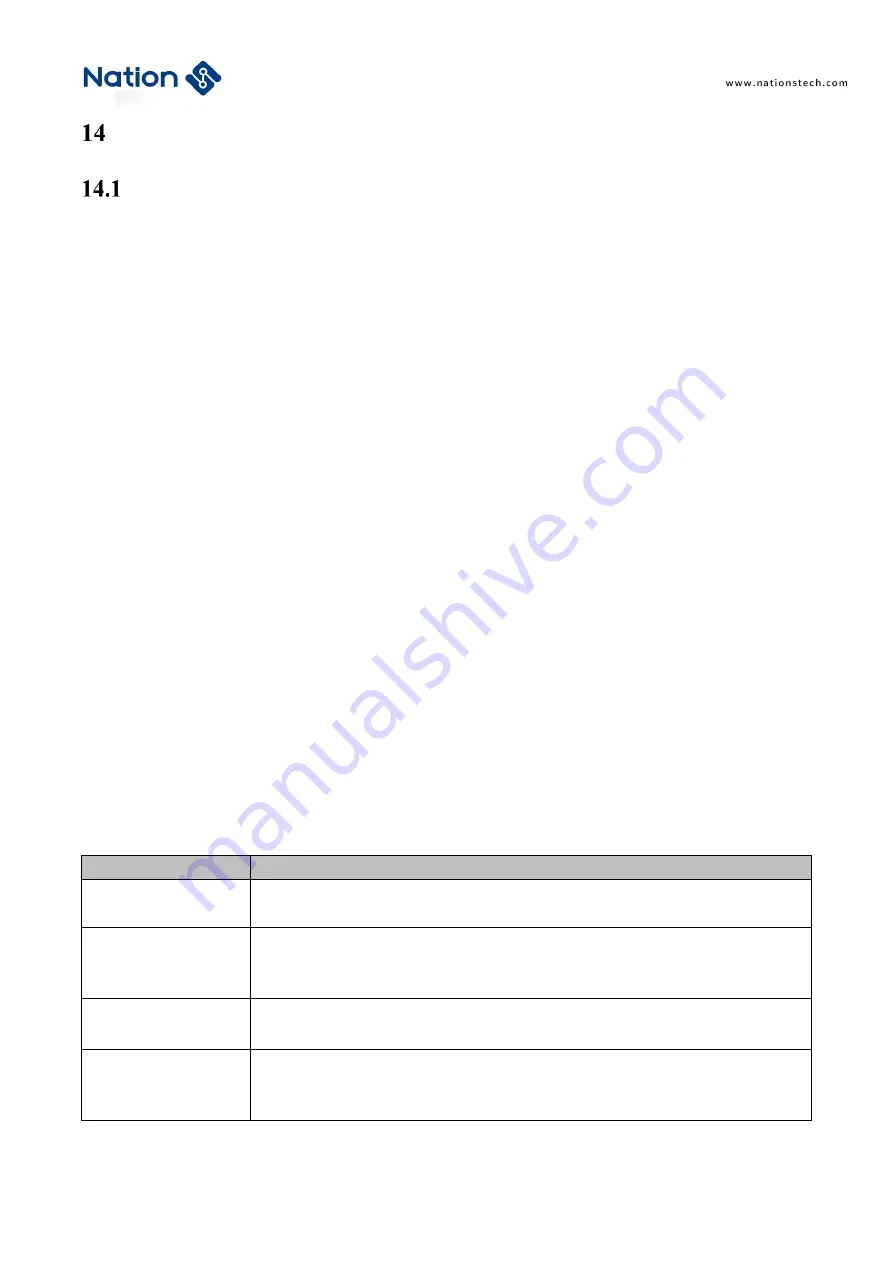
398
/
838
Nations Technologies Inc.
Tel
:
+86-755-86309900
:
Address: Nations Tower, #109 Baoshen Road, Hi-tech Park North.
Nanshan District, Shenzhen, 518057, P.R.China
Real-time clock (RTC)
Description
The real-time clock (RTC) is an independent BCD timer/counter.
Daylight saving time compensation supported by software.
A periodic automatic programmable wakeup timer.
Two 32-bit registers contain the seconds, minutes, hours, day (day of week), date (day of month), month, and
year.
Independent 32-bit register contain sub-seconds value.
Two programmable alarms.
Two 32-bit registers contain two programmable alarms seconds, minutes, hours, day (day of week), and date
(day of month).
Two 32-bit registers contain two programmable alarms sub-seconds.
Digital calibration function.
Time-Stamp function.
After Backup domain reset, all RTC registers are protected against possible parasitic write accesses.
Multiple Wakeup sources of Interrupt/Event. These include Alarm A, Alarm B, Wakeup Timer, Time-Stamp.
After RTC is enabled by the RCC register and voltage remains in the operating range, RTC will not stop timing
in any mode (include RUN mode, SLEEP mode, STOP0 mode, STOP2 mode and STANDBY mode).
RTC provides a variety of ways to wakeup from all low-power modes (SLEEP mode, STOP0 mode, STOP2
mode and STANDBY mode .
14.1.1
Specification
Table 14-1 RTC feature support
Main function
Description
Clock
RTC clock can be selected from LSI, LSE and HSE, which are 40KHz, 32.768KHz and HSE / 128
respectively
Reset
The APB interface is reset by the system. Some register reset from RTC module is synchronized
with APB reset.
RTC core is reset by backup domain reset.
Calendar
Calendar consists of sub second, second, minute, hour (12 or 24 format), day (day of the week),
date, month and year. These data are stored in the shadow register of APB module.
Wakeup Timer
Output “RTC_OUT” can be configured to send wakeup events to GPIO. At the same time, it also
can be configured as an interrupt/event to wake up the system from SLEEP, STOP0 ,STOP2 and
STANDBY modes.
















































